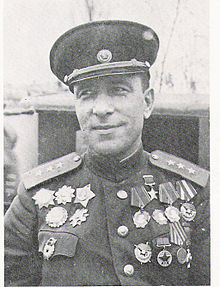 Our first urban warfare report that we did had a big impact. It clearly showed that the intensity of urban warfare was not what some of the “experts” out there were claiming. In particular, it called into question some of the claims being made by RAND. But, the report was based upon Aachen, Cherbourg, and a collection of mop-up operations along the Channel Coast. Although this was a good starting point because of the ease of research and availability of data, we did not feel that this was a fully representative collection of cases. We also did not feel that it was based upon enough cases, although we had already assembled more cases than most “experts” were using. We therefore convinced CAA (Center for Army Analysis) to fund a similar effort for the Eastern Front in World War II.
Our first urban warfare report that we did had a big impact. It clearly showed that the intensity of urban warfare was not what some of the “experts” out there were claiming. In particular, it called into question some of the claims being made by RAND. But, the report was based upon Aachen, Cherbourg, and a collection of mop-up operations along the Channel Coast. Although this was a good starting point because of the ease of research and availability of data, we did not feel that this was a fully representative collection of cases. We also did not feel that it was based upon enough cases, although we had already assembled more cases than most “experts” were using. We therefore convinced CAA (Center for Army Analysis) to fund a similar effort for the Eastern Front in World War II.
For this second phase, we again assembled a collection of Eastern Front urban warfare engagements in our DLEDB (Division-level Engagement Data Base) and compared it to Eastern Front non-urban engagements. We had, of course, a considerable collection of non-urban engagements already assembled from the Battle of Kursk in July 1943. We therefore needed a good urban engagement nearby. Kharkov is the nearest major city to where these non-urban engagements occurred and it was fought over three times in 1943. It was taken by the Red Army in February, it was retaken by the German Army in March, and it was taken again by the Red Army in August. Many of the units involved were the same units involved in the Battle of Kursk. This was a good close match. It has the additional advantage that both sides were at times on the offense.
Furthermore, Kharkov was a big city. At the time it was the fourth biggest city in the Soviet Union, being bigger than Stalingrad (as measured by pre-war population). A picture of its Red Square in March 1943, after the Germans retook it, is above.
We did have good German records for 1943 and we were able to get access to Soviet division-level records from February, March and August from the Soviet military archives in Podolsk. Therefore, we were able to assembled all the engagements based upon the unit records of both sides. No secondary sources were used, and those that were available were incomplete, usually one-sided, sometimes biased and often riddled with factual errors.
So, we ended up with 51 urban and conurban engagements from the fighting around Kharkov, along with 65 non-urban engagements from Kursk (we have more now).
The Phase II effort was completed on 30 June 2003. The conclusions of Phase II (pages 40-41) were similar to Phase I:
.Phase II Conclusions:
- Mission Accomplishment: This [Phase I] conclusion was further supported. The data does show a tendency for urban engagements not to generate penetrations.
- Casualty Rates: This [Phase I] conclusion was further supported. If urban combat influenced the casualty rate, it appears that it resulted in a reduction of the attacker casualty rate and a more favorable casualty exchange ratio compared to nonurban warfare. There still appears to be no basis to the claim that urban combat is significantly more intense with regards to casualties than is nonurban warfare.
- Advance Rates: There is no strong evidence of a reduction in the advance rates in urban terrain in the Eastern Front data. TDI still stands by its original conclusion that the average advance rate in urban combat should be one-half to one-third that of nonurban combat.
- Linear Density: Again, there is little evidence that the presence of urban terrain results in a higher linear density of troops, but unlike the ETO data, the data did not show a tendency to trend in that direction.
- Armor Losses: This conclusion was further supported (Phase I conclusion was: Overall, it appears that the loss of armor in urban terrain is the same as or less than that found in nonurban terrain, and in some cases is significantly lower.)
- Force Ratios: The conclusion was further supported (Phase I conclusion was: Urban combat did not significantly influence the Force Ratio required to achieve success or effectively conduct combat operations).
- Duration of Combat: Nothing could be determined from an analysis of the data regarding the Duration of Combat (Time) in urban versus nonurban terrain.
There is a part 2 to this effort that I will pick up in a later post.


